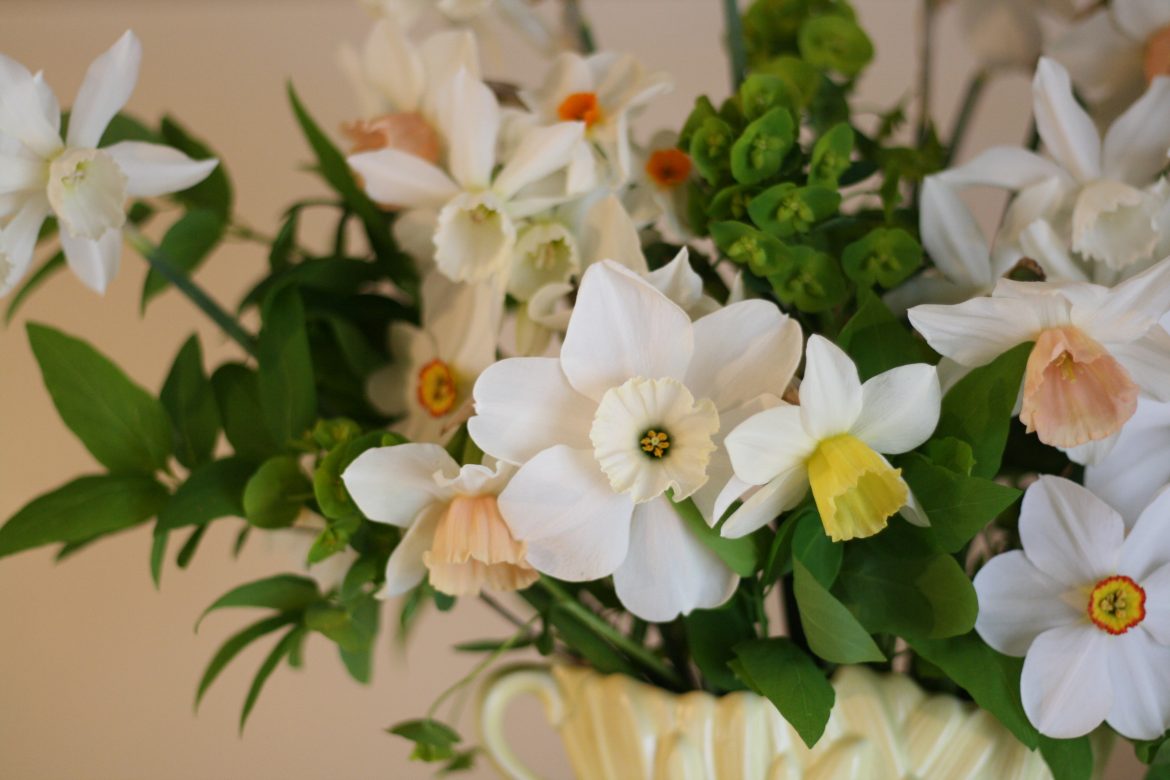Anna Taylor, owner of Anna’s Flower Farm in Audley End, shares what’s going on in the garden this month
In between the showers, I will take every opportunity to enjoy the lengthening days and warmer, brighter weather this month. The sun is still rising in the sky and there is noticeable growth and seedlings springing up all around us.
Spring flowers are often the most joyful colours and full of scent; my favourites include wallflowers, narcissus and blossoms, not to mention our beloved Ranunculus and Anemones. With optimistic forethought in the previous summer and autumn, one can have abundance of colour and stems to cut and enjoy inside. We have waited a long time for these treats.
And don’t forget all those edibles, forget-me-nots, tulips and honesty, all perfect for simple flourishes to your dishes. But what is following on after the bulbs? Late May and June can be some of the trickiest months to create interest after the initial spring explosion. To lengthen the seasonal interest, biennials including peachy foxgloves, purple honesty flowers (followed on by paper pods for winter decoration) and sweet rocket are perfect – I will remind you to sow these in June but buy your seeds now in preparation. This year, see if you can find an easy way to record gaps in the garden this year and consider what you’d like to see and how you can achieve this across the seasons.
Other ways of including late spring colour and interest is to look at your boundaries and plant climbers now: honeysuckles and clematis have plenty of varieties that bloom in May and June at a time when the beds are developing for the summer. Dig a good hole 30 centimetres away from the dry boundary of your wall or fence and include bone meal for root growth and plenty of compost. Plant angled towards the wall and water-in well.
It is said that gardeners are the most optimistic people, planting for the future, and I love that
Right now, you can sow your second sowing of hardy annuals (frost hardy: ammi, antirrhunums, cornflowers) and your first sowing of half-hardy seeds (not frost hardy: nicotiana, cosmos, zinnias). Sow indoors under cover on seed compost and vermiculite, water from below and cover with a clear lid to retain the moisture until germinated. Transplant when you see two true leaves, planting out next month into those gaps in the borders, either in beds or in pots. Remember to keep an extra eye on any you do plant in pots as they will dry out faster and need more consistent watering. There is also time to lift and split late summer perennials like Japanese anemones, persicaria and asters for replanting smaller repeating clumps of flowers.
I think as a gardener, giving the garden that little helping hand as the year goes by are some of the greatest pleasures and calls us back for more. Don’t get too hung up on it all being perfect – even the most experienced gardeners and nurseries have failures each year and it’s part of the rich relationship with our gardens. Enjoy the process. It is said that gardeners are the most optimistic people, planting for the future, and I love that. It’s only edging the borders that I can take or leave!
During the coronavirus outbreak, English Heritage and the National Trust are keeping open many of their free-to-enter parks and gardens – check their websites to find out where you can get your fix of nature!

